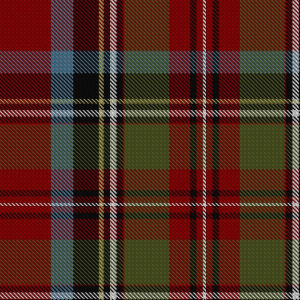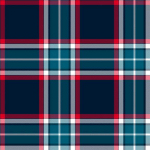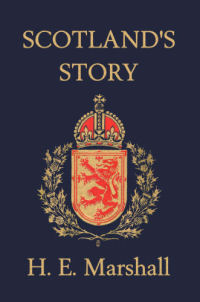
HOME
INTRO
SYMBOLS
ALMANAC
ECONOMY
GEOGRAPHY
STATE MAPS
PEOPLE
FORUM
NEWS
COOL SCHOOLS
STATE QUIZ
STATE LINKS
BOOK STORE
MARKETPLACE
NETSTATE.STORE
NETSTATE.MALL
GUESTBOOK
CONTACT US


South Carolina State Tartan

Official North Carolina Tartan: STA No. 1377 (Carolina tartan)
The Scottish Register of Tartans
House Bill No. 932 (H932), proposing that the "Carolina tartan" be adopted as "the official tartan of the State of North Carolina" was ratified on May 13, 1991.

International Tartan's N.C. tartan
Not official
This is the same "Carolina tartan" adopted by South Carolina eleven years later in 2002.
There is some, perhaps manufactured, dissension regarding the adoption of this tartan as North Carolina's official tartan, evidently related to the fact that both North and South Carolina have adopted the same tartan, the Carolina tartan, as their respective official tartans.
A company named International Tartans is promoting a tartan for North Carolina referring to it as "The tartan for all true North Carolinians." International Tartan's design is not the official North Carolina tartan.
According to CarolinaTartan.com:
The so-called "North Carolina" and "South Carolina" tartans are copyrighted proprietary designs, and as such, they may only be purchased through McGill's company, International Tartan. The actual Carolina tartan, as an official symbol of both NC and SC, is in the public domain.
In fact, the "Carolina tartan" shown above (STA No. 1377) is the "official tartan" of the States of North Carolina and South Carolina. It is the only official tartan of these states.
GENERAL ASSEMBLY OF NORTH CAROLINA
1991 SESSIONCHAPTER 85
HOUSE BILL 932AN ACT TO ADOPT THE CAROLINA TARTAN AS THE OFFICIAL SCOTTISH TARTAN OF THE STATE OF NORTH CAROLINA.
Whereas, Scottish families began to settle in both North and South Carolina during the last two decades of the seventeenth century; and
Whereas, in the first half of the eighteenth century, large numbers of both Highland Scots and Ulster Scots settled in the two Carolinas; and
Whereas, Scots became major elements of the population of both colonies; and
Whereas, a tartan is a plaid textile design consisting of stripes of varying width and color, each tartan unique to a clan, district, or group; and
Whereas, St. Andrews Societies are organizations for the celebration of things Scottish; and
Whereas, St. Andrews Societies in North and South Carolina arranged for the design of a Carolina Tartan and cosponsored the effort for adoption of the design by the Scottish Tartans Society, which registered the Carolina Tartan in 1981, and
Whereas, those St. Andrews Societies believe that the Carolina Tartan was the first one successfully advanced for a group of states in the United States, although Canadian provinces had their distinctive tartans; and
Whereas, since 1981 tartans have been designed for other states; and
Whereas, the Carolina Tartan is a variation of a tartan associated with King Charles II, who gave the grant in 1663 that made Carolina a proprietary colony; and
Whereas, there is a desire on the part of many North Carolina citizens of Scottish descent to honor their ancestral ties; Now, therefore,
The General Assembly of North Carolina enacts:
Section 1. Chapter 145 of the General Statutes is amended by adding a new section to read:
"§ 145-15. State tartan.
The Carolina Tartan is adopted as the official tartan of the State of North Carolina."
Sec. 2. This act is effective upon ratification.
In the General Assembly read three times and ratified this the 13th day of May, 1991.
H932 wording, above, is virtually identical to wording used to adopt the Carolina tartan as the official tartan of South Carolina eleven years later.
The following information regarding threadcount and pallet for the Carolina tartan is provided by the The Scottish Register of Tartans: The National Archives of Scotland.
Threadcount:
R64A28K32Y6K8W8K8R2G56R26K8R8W4
Pallet:
- K=101010 BLACK;
- Y=C4BC68 YELLOW;
- G=5C6428 GREEN;
- R=A00000 RUST;
- A=5C8CA8 AZURE;
- W=FFFFFF WHITE.
North Carolina Law
The following information was excerpted from the North Carolina General Statutes, chapter 145, section 145014.
Chapter 145. State Symbols and Other Official Adoptions.
SECTION 145‑15.
§ 145‑15. State tartan.
The Carolina Tartan is adopted as the official tartan of the State of North Carolina. (1991, c. 85, s. 1.)
Sources...
State of North Carolina. North Carolina General Statutes. Raleigh: State of North Carolina, 2011. Web. 16 Jun 2011.
"Tartan Fraud." The Carolina Tartan. Unknown publisher, 30 Aug 2010. Web. 16 Jun 2011.
Shearer, Benjamin F. and Barbara S. State Names, Seals, Flags and Symbols: A Historical Guide Third Edition, Revised and Expanded. Westport, Conn: Greenwood Press, 3 Sub edition, 2001.
Additional Information
State Tartan: NCpedia: a project coordinated and managed by the Government and Heritage Library at the State Library of North Carolina, part of the NC Department of Cultural Resources.
The Carolina Tartan: The Carolina Tartan -- official tartan of the states of North and South Carolina.
The Carolina tartan: The Scottish Tartans Museum, Franklin, North Carolina.
Tartan Details - Carolina, States of: Information held within The Scottish Register of Tartans for the "Carolinas, States of" tartan.
St. Andrew's Society of North Carolina: Official website.
A History of Scottish Kilts: From the website of Authentic Ireland Travel.
The History of Scottish Tartans & Clans Tartans: Scottish History Online.
A Short History of Tartan: Peter MacDonald Tartan Design & Consultancy

Scotland's Story
by H. E. Marshall
Scotland's Story, by H. E. Marshall. 552 pages. Yesterday's Classics (December 19, 2005) Reading level: Ages 9-12. A child's history of Scotland, from legendary days through the time when the kingdoms of Scotland and England were joined together. Relates in vigorous prose the thrilling exploits of the heroes and heroines who defended Scotland from its English invaders. Includes the stories of Macbeth, William Wallace and Robert the Bruce, Mary Queen of Scots, the poet king and the beautiful lady of the garden, the "Glen of Weeping" and many others. First published a century ago, from the author of the highly-acclaimed "Our Island Story."
Scotland: The Story of a Nation, by Magnus Magnusson. 752 pages. Grove Press (January 17, 2003) Drawing on a great deal of modern scholarship that has redefined the nation's story, Magnusson vividly re-creates the long and fascinating story of Scotland, offering the most up-to-date and comprehensive history available today. Magnusson, who received an honorary knighthood for his contributions to the preservation of Scotland's heritage, casts the nation's historical trajectory as a long struggle toward nationhood. He explains the roots of the original Scots and examines the extent to which Scotland was shaped by the Romans, the Picts, the Vikings, and the English. He casts a sober eye on the many historical myths that have developed over the years, assessing their credibility while giving full appreciation of their importance to the people of Scotland.

Tartan: Romancing the Plaid
by Jeffrey Banks, Doria de La Chapelle
Tartan: Romancing the Plaid, by Jeffrey Banks, Doria de La Chapelle. 288 pages. Rizzoli; illustrated edition edition (October 23, 2007) Fashion world insiders Jeffrey Banks and Doria de La Chapelle have written the definitive book on tartan, bringing together a dizzying array of images to tell the story of tartan's humble beginnings to its current status as the ultimate emblem of great taste and high fashion. In addition to chronicling tartan enthusiasts from every age - including the incomparably fashionable Duke of Windsor whose closet was jam-packed with tartan kilts - Tartan profiles the designers who've made tartan an integral part of their work, from punk-inspired provocateurs Vivienne Westwood, Jean-Paul Gaultier, and Alexander McQueen to the more refined fashions of titan Ralph Lauren and Burberry.
Learning to Weave, by Deborah Chandler. 232 pages. Interweave Press; Revised edition (March 1, 1995) Learning to Weave has become the standard text book for both teachers and self-taught weavers. All you need to know is here including warping, reading and designing drafts, and the basics of weave structures. Warping back to front is included as well as updated resource lists.
Tartan: The Highland Textile, by James D. Scarlett. 204 pages. Shepheard-Walwyn (January 1, 1990) This is one of the tartan classics by Jamie Scarlett, éminence gris of the tartan scene. First published in 1985 and revised and reprinted in 1995 due to popular demand. A slim, stylish book providing the weaver and student with invaluable information on tartan and its weaving.
The Tartan Weaver's Guide, by James D. Scarlett. 68 pages. Shepheard-Walwyn Publishers (1995) Combines practical experience with a grasp of Highland social history in this book, which although aimed specifically at the amateur tartan-weaver, contains much of which will be of interest to students of either subject.
Visit the NETSTATE North Carolina State Book Store for additional North Carolina related books, including North Carolina Reference Books, History, Biographies and Cookbooks.

